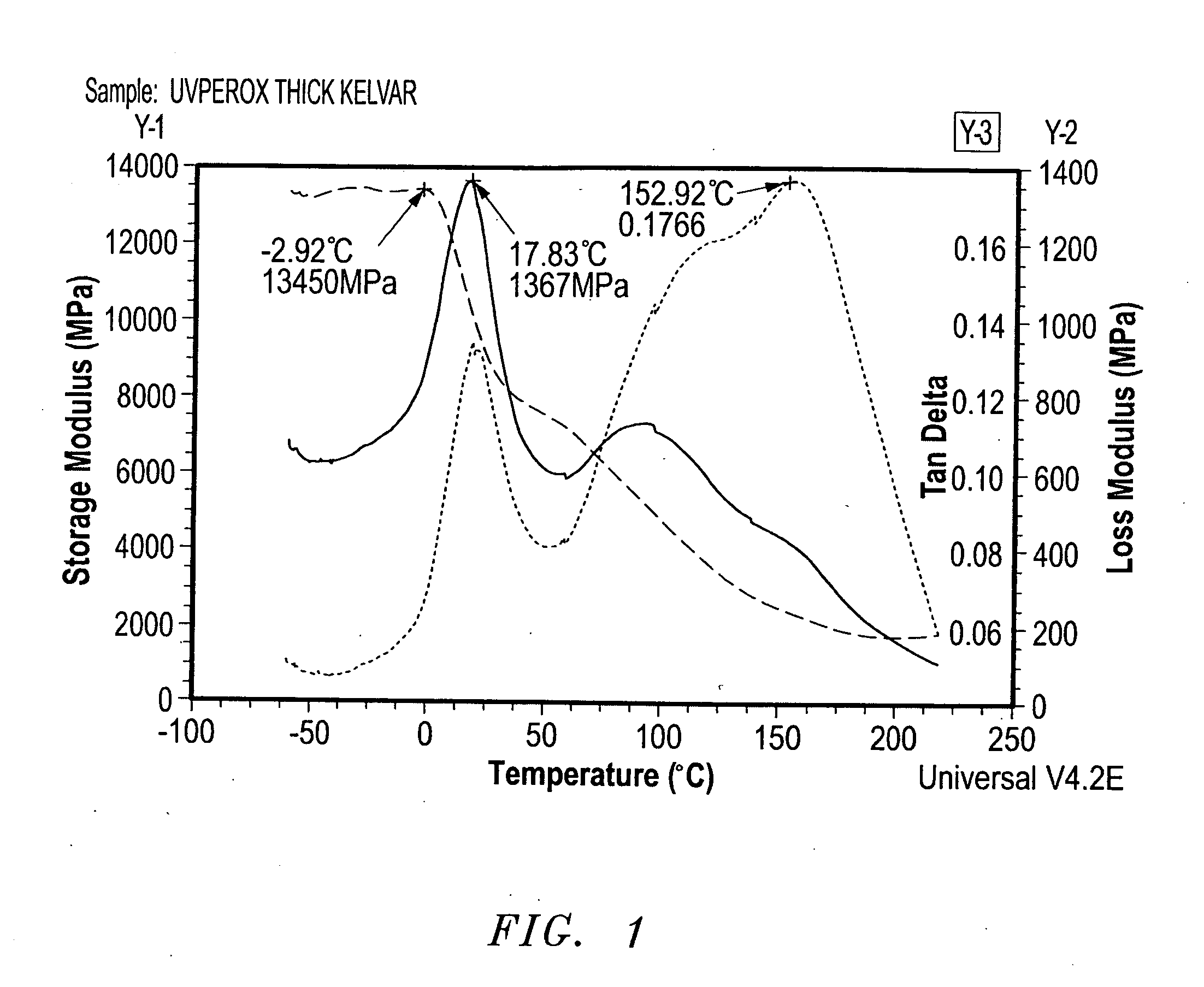Ultraviolet light curing compositions for composite repair
- Summary
- Abstract
- Description
- Claims
- Application Information
AI Technical Summary
Benefits of technology
Problems solved by technology
Method used
Image
Examples
example
[0050]In this example, the composite panels were prepared using a wet lay up technique with four plies of carbon fabric consolidated using vacuum bagging, and curing with exposure to a UVA source for sixty minutes. The composite samples dynamic performance was characterized using a dynamic mechanical analyzer at 1 Hz, over a wide temperature range. Good adhesion to primed aluminum and steel, resistance to aircraft fluids, high Tg, interlaminar shear properties, resin content, and repair fatigue durability were noted for these laminates.
[0051]A formulation used is shown in the following table.
WeightWeight GPercentageComponent ACN15143.1042.76SR36820.5720.41SR423A12.8612.76Methyl Methacrylate7.717.65Methacrylic Acid10.2810.20CN 9754.984.94Irgacure 20220.500.50Benzoyl Peroxide0.800.79Total100.8100Component BCN15143.1043.06SR36820.5720.55SR423A12.8612.85Methyl Methacrylate7.717.70Methacrylic Acid10.2810.27CN 9754.984.98Irgacure 20220.500.50Dimethylaniline0.100.10Total100.0100Mix A to B ...
PUM
| Property | Measurement | Unit |
|---|---|---|
| Percent by mass | aaaaa | aaaaa |
| Percent by mass | aaaaa | aaaaa |
| Percent by mass | aaaaa | aaaaa |
Abstract
Description
Claims
Application Information
 Login to View More
Login to View More - R&D
- Intellectual Property
- Life Sciences
- Materials
- Tech Scout
- Unparalleled Data Quality
- Higher Quality Content
- 60% Fewer Hallucinations
Browse by: Latest US Patents, China's latest patents, Technical Efficacy Thesaurus, Application Domain, Technology Topic, Popular Technical Reports.
© 2025 PatSnap. All rights reserved.Legal|Privacy policy|Modern Slavery Act Transparency Statement|Sitemap|About US| Contact US: help@patsnap.com


